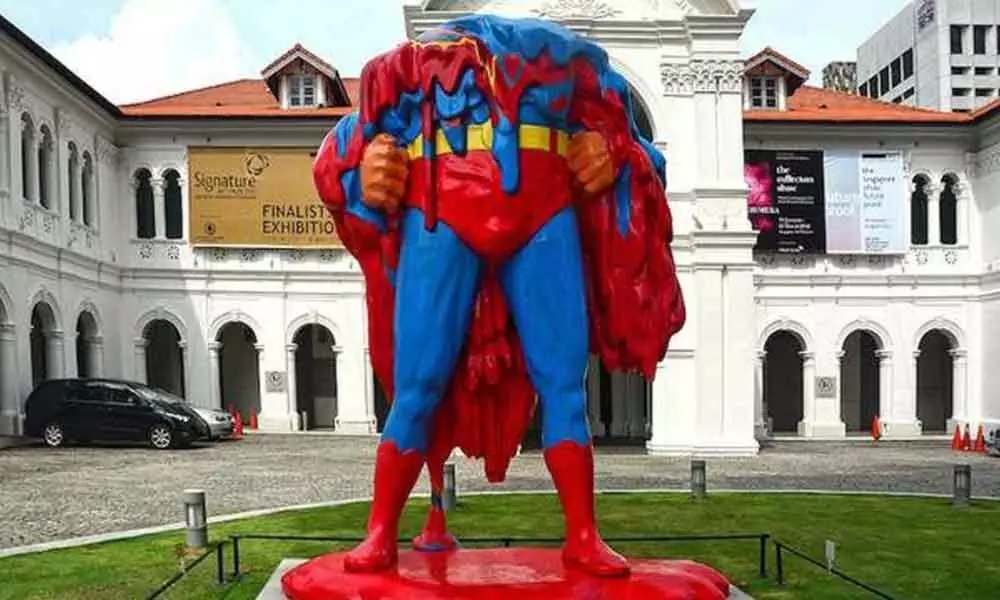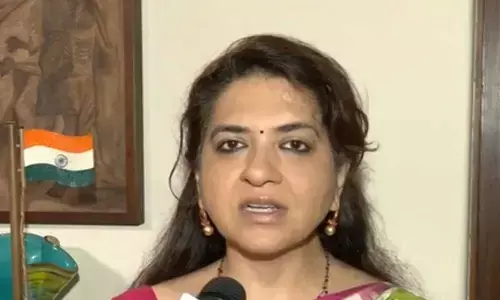Art plays a vital role in shaping up innovations

Before India was colonised, Indian artisans produced handicrafts and textiles far superior in quality to those produced in Britain.
Before India was colonised, Indian artisans produced handicrafts and textiles far superior in quality to those produced in Britain. Yet when the industrial age in Britain allowed the mass production of goods cheaply, demand for high-quality products manufactured by local artisans was replaced by demand for low-quality ones mass-produced in Britain.
Ancient India was renowned for the skill of its craftsmen and artisans who carved sculptures in the Ajanta and Ellora Caves in Maharashtra and Hailey Bedu temples in Karnataka earning them the title of "Dev Shilpi' or divine craftsmen.
The centuries-old traditional Indian artisans and craftsmen couldn't compete with factories in Britain. The customers tend to buy factory manufactured low-quality mass-produced goods. Hence, they abandoned professions they and their forefathers had engaged in for centuries. India's society itself has led astray and became convinced that skills like engineering, which allowed goods to be mass-produced, were superior to the nuanced artistic ability possessed by artisans and craftsmen.
This mindset is still visible in the country's education system where engineering, medicine, and management degrees are valued far more than degrees that emphasise the arts.
Artists shaping business
Indians are practical people, when they saw that working as craftsmen and artisans couldn't allow them to earn a livelihood they adopted a practical means of doing so. Yet in the 21st century, there is more need than ever before for artists.
What's more, successful artists today have the opportunity to be rewarded considerably monetarily, not unlike artisans in ancient India who enjoyed royal patronage. For over a decade, design thinkers are massively in demand. Organisations from beverages, technology, consulting services, and advertising industries are hiring design thinking specialists. The reason is being artists and designers look at the problem from a different perspective, basically, the user's perspective which is helping businesses in establishing a demonstrated and repeatable problem-solving practice. Designers and artist's combine creative and critical thinking before executing the work.
Steve Jobs, one of the visionaries of the 21st century, was inspired by art when he created the first Macintosh. During his time at Reed College (from which he eventually dropped out) he had enrolled in a calligraphy course which led him to create word processing software that had multiple fonts. Before the Macintosh, word processing software had a single dull font which made Steve Jobs idea of introducing software that offered multiple fonts revolutionary. What's more, the public loved it because it was so innovative. It had been inspired by art.
Furthermore, when Boeing was designing its 777 airliners it sought the help of artists to make its interiors pleasant so passengers would have a comfortable flight. Artists helped design the kind of lighting the cabin of the Boeing 777 ought to have and much else. Artist's advice was sought because the Boeing 777 allowed passengers to fly further, meaning passengers would be spending more time flying than before. The Boeing 777 was a big hit and out-competed Airbus's A380, its direct competitor.
Art adds value to brands
Artists are needed more than ever before because, in a world where catchy logos and images can propel a brand to new heights, the creative insights of artists help build brands. An artist who has exhibited his or her skill on canvas can also develop captivating websites and imagery. So while engineers today can design outstanding products, artists can help craft imagery that makes them attractive to consumers.
Hundreds of millions of Indians love spending time in front of screens, yet what they see is often shoddy or plagiarized. A robust educational infrastructure that encourages those with the right talent to study a lively subject like art instead of becoming mediocre engineers can transform the quality of what Indians see around them. When those having the aptitude for art pursue their passion, the quality of images, paintings, and sculptures seen on screen and in real life will reflect the true ability of Indians and help mitigate the widely-held stereotype that Indians are copycats. Excitingly such imagery will be authentically Indian. But there is much more.
Artists manufactured products with an edge
While Indians excel in industries like software, they don't excel in manufacturing products, but eventually, they must. Globally even high-quality Indian products are believed to have shoddy aesthetics. However, this is gradually changing as evident in the eye-catching designs of numerous new automobiles manufactured by Indian companies. Artists can help propel this change further. Just as artists helped design the attractive interiors of the Boeing 777, so too are they needed to create ergonomically designed finished products in India. Without their creative inputs, Indian manufacturers will never be able to design products that appeal to a global audience.
The artisans of ancient India were both engineers and artisans because they conceptualised their products and gave them aesthetically pleasing shape. Today most products are far too complex to be designed by a single individual. This is why engineers and artists are needed to work together as by doing so they can build functional products that are pleasing to the eye, just as artisans in ancient India did.










